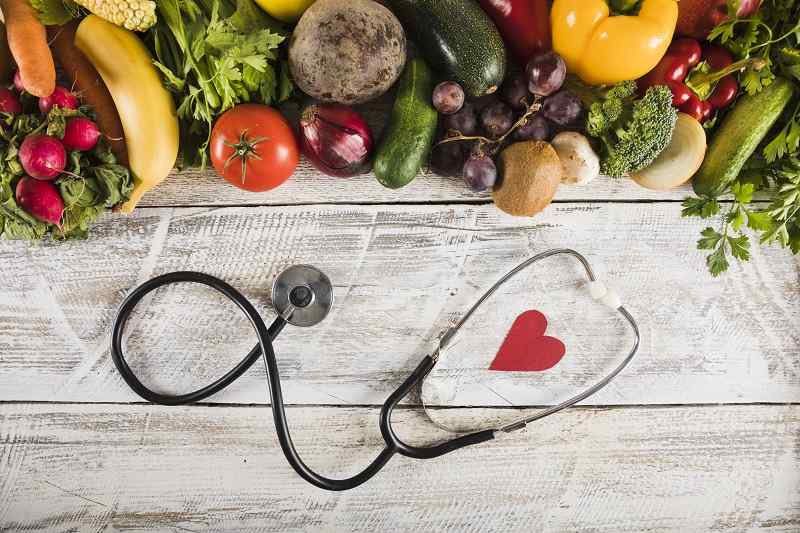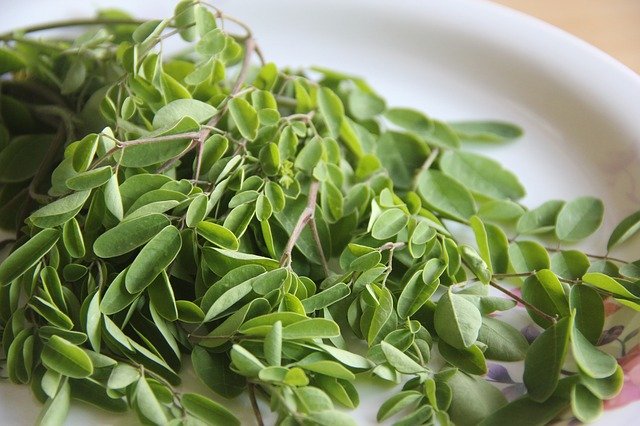COVID-19 Pandemic seems to be staying with us for quite some time. With the current status of the world today, the front-liners, especially the health care workers are doing their best to defend the people against it. As countries around the world strategize for the best plan of action to lessen the transmission of this virus, we health care workers can do certain measures to decrease the chances of getting sick; especially now when the world needs us the most. Health care workers work nonstop for long hours every day to fight COVID-19. Hence, the food that we eat plays a very vital role in regards to our well-being and our immunity. “You are what you eat” and this phrase is always true. With all the different choices of food available for us, some of them are considered as SUPERFOODS.
Superfoods are foods that contain very high amounts of nutritious substances that our body needs. It boosts our immunity, detoxifies our body, or provides energy throughout the day. We have accumulated 10 Superfoods for Nurses that will boost their immune system to make them less vulnerable to acquiring COVID-19 and other diseases. Aside from that, these superfoods will also provide them with the energy they need to sustain their long hours of shift and it will also help them alleviate stress.
Superfoods for Nurses
1. Dark Green Leafy Vegetables (DGLV)
This is the TOP 1 in the superfoods category. DGLV is rich with different sorts of vitamins and minerals. It is also a good source of protein. Green leafy veggie such as the moringa is considered a “miracle food”. It’s way past its other counterpart vegetables.
Moringa has 4x more Vit. A than carrots, 3x more potassium than a banana, 4x more calcium than milk, 3x more Vit. E than almonds, and 7x more Vit. C than oranges. It’s a superfood-worthy vegetable. Another example is the kale.
Kale is one of the best sources of Vitamin K, which is why kale is good for the prevention of chronic diseases of the heart. It is also rich in Vitamin C like the moringa which, as we all know, can increase our immunity and can help fight against diseases and viruses.
Spinach is also on this list. Spinach is rich in iron, which helps create hemoglobin – more hemoglobin means more oxygen in the body. It is also an essential source of folic acid which is not only vital for pregnant women but is also good for tissue growth and cellular function.
These are just some of the many DGLV that we can buy in the market. They are all essential in our everyday diet and they should be part of our staple. These foods are very low in calories, very high in nutrients and rich in fiber as well. Thus, as it boosts your body with its nutritious benefits, it also helps your body lose unwanted fats. Plus, there are hundreds of ways to prepare and consume these superfoods, it can be eaten raw, made into a salad, or blended into a smoothie. It’s a win-win.
2. Fish
Fish are great source of Omega-3 Fatty acids, especially fatty varieties such as salmon, sardines, tuna, and mackerel. Omega-3 fatty acids are not often found in vegetables, that’s why vegetarians have to take their Omega-3 fatty acids in forms of supplements. Omega-3 fatty acids are good for the body and brain function. It also reduces the chances of suffering chronic diseases such as heart attack and stroke. Fish is also a good source of Vitamin D and Iodine. Studies have shown that eating fish regularly helps improve the quality of sleep. A study conducted in the US has shown that those who regularly eat fish had decreased chances of heart diseases by 15%.
Preparation for fish is really fast and super simple. It can be grilled, stewed, pan-fried, or steamed. It also makes bland foods delicious. It is very filling and it satisfies hunger. It can be partnered with other superfoods that will be discussed on this list.
3. Eggs
Eggs can be cooked in hundreds of ways. It is very versatile and it’s packed with nutrients that we need. One egg can provide our body with 6grams of protein and 9 essential amino acids. Since it’s high in protein, it is a good source of energy that we need throughout the day. It is also good for our brain health and it improves our mood.
Eggs are avoided by some people because of the wrong connotation that it raises cholesterol levels. A review of 17 studies has proven otherwise as more than 250,000 participants have found no association between the consumption of eggs and heart disease or stroke. A delicious eggy bread, baked hash, or a French toast is enough to fill your breakfast with the energy your need to go on with your day.
4. Garlic, Ginger, and Turmeric
These are considered food enhancers because they elevate the taste and aroma of the foods that we prepare. They are also one of the most nutritious foods that one can find.
Garlic has been used as a medicinal herb since medieval times. After several centuries, science has proven its medicinal properties. Due to its unique properties of having allicin, sulfur compounds, and vitamin C, garlic has been scientifically proven for its healing abilities. It has been proven to combat common colds and influenza. Garlic can be used in tons of different dishes. It is almost impossible to cook an Asian dish without using garlic.
Ginger is popular for its anti-inflammatory properties. It is also good for blood regulation. It decreases the chances of acquiring chronic illnesses such as heart disease and cancer. Ginger can be used as a flavor enhancer or can be made into a tea. Ginger is very good for weight loss as well.
Turmeric is both anti-inflammatory and antioxidant. It is great for boosting the immune system. It lowers the bad cholesterol in our body and it’s good for alleviating arthritis due to its anti-inflammatory properties. Turmeric can be made into a tea or it can be mixed with sauces or in its most popular form – turned into a curry.
5. Avocado
Rich, silky, smooth, and tasty. Avocado is loved by the people. It’s mild, it’s fresh, it’s very succulent and the best part is that it is packed with nutrients. What’s unique about avocados is that it has copper. Copper helps regulate red blood cells in the body. It is also rich in Vitamin C, high in fiber, and it contains properties that improve levels of Low-Density Lipoproteins (LDL) in our body – which are the bad fats. Since avocados are a good source of dietary fibers, recent studies have shown that fiber may play a role in regulating our immune system by aiding against inflammation.
Avocados can be eaten by itself or be made into a refreshing salad. It can be made into a breakfast dish as well, have a grilled sourdough loaf, make a mixture of black sesame seeds, chili flakes, and lemon zest, put the sliced avocados on top of the sourdough, sprinkle with the mixed aromatics and a healthy and delicious breakfast is ready. It can be brought into the shift and can be eaten during snack times. Quick and easy to prepare.
6. Green Tea
Most of us health care workers are addicted to caffeine – coffeeholics. But set aside the coffee and switch to tea, more specifically, green tea. The nutritional benefits that we can get from simply drinking green tea are phenomenal. Studies have shown that green tea not just helps us prevent chronic diseases, but it prolongs life itself. Green tea is rich with polyphenols, vitamins, and cathechins, it is why green tea is packed with medicinal properties. Various studies have been done with green tea and it consistently shows that green tea can improve brain function and regulates mood. Another study states that green tea increases metabolism in our body.
Green tea stimulates thermogenic effects in our bodies and it increases the heat energy produced by our body. It then promotes metabolism, hence, we become more energetic and as a side effect, leads to weight loss. So, if you are craving for your dose of caffeine, choose green tea over coffee next time. Join the growing community of match a lovers.
See Also
7. Nuts and Legumes
Nuts and legumes are rich in macronutrients such as proteins and fats, and fiber. They are “high-fat, low-carb” foods. They are also high in antioxidants; hence, they can help alleviate stress and it reduces oxidative damage in our bodies caused by free radicals. Nuts have a strong anti-inflammatory property, especially pistachios, walnuts, and almonds. Legumes have the same nutritional profile as nuts. Peanuts are legumes instead of nuts.
Legumes optimize heart condition, regulate glucose in the blood, low in fat, contain high amounts of proteins, and very filling. 33 meta-analysis studies have shown that people who eat nuts have a longer lifespan than those who don’t due to their ability to prevent chronic diseases. In one of the studies conducted, it shows that nuts may reduce high blood pressure and cholesterol levels.
These foods are very versatile. We can eat them in many different varieties. They can be mixed with hundreds of different recipes. Nuts can be eaten as a snack. Legumes can replace our unhealthy carbohydrate sources such as starchy foods. Nuts can replace the junk foods that we consume during breaks. It’s all a matter of choice.
8. Berries
Decadent, sweet, tarty, and delicious. Berries are considered as one of the most delicious food out there. But aside from it being so delicious, berries are also heavy on the nutrients criteria. It is worth the name of superfood. Berries are most popular for their antioxidants. One study showed that blueberries and raspberries have the highest content of antioxidants of the commonly consumed fruits. They are rich in fiber and they are very good for the skin.
Strawberries are high in Vitamin C which is good for our immunity. It has anti-cancer properties because of its high amounts of antioxidants and it is also good for controlling our cholesterol in our body. Studies also suggest that antioxidants in berries may help lower inflammatory markers. One study showed that eating 500gms of strawberry pulp every day for 30 days decreased a pro-oxidant marker by 38%. Berries are accepted in most, if not all, of the diet types. It can be also eaten anytime. Late for your shift? Throw in some berries in your yogurt, add in some oats and you got yourself a healthy breakfast. Looking for a snack, grab a bite of your fresh, cold berries, or throw them into the blender and make a slurpy. Berries are versatile, fun, delicious, and it is healthy.
9. Olive oil
Aromatic, flavorful, healthy. If you are looking for the perfect oil, this is the oil to buy. Most of the factory-made cooking oils out there are harmful to our health. Ultimately, frying foods are part of our staple meals. On average, we tend to choose to fry more often than other ways to prepare our foods. Since we fry too much of what we eat, we might as well fry it in a healthy way. Olive oil is rich in antioxidants, vitamins E and K, it is good for the heart and helps prevent stroke. For an “oil” that’s not too bad at all. Aside from these, studies also found that 50mL of extra virgin olive oil has similar effects as 10% of the adult dosage of Ibuprofen due to its anti-inflammatory properties. A study of 140,000 participants showed that the consumption of olive oil decreases the risk of stroke than those who did not consume olive oil.
We are sometimes intimidated in buying olive oil because we think it’s expensive. Well, it’s because of its versatility and health properties. Olive oil can be used for pan searing your meat and vegetables; it can also be used as a salad dressing or made into a vinaigrette. Olive oil has many different uses, not just frying. So, the price we pay for buying it is worth it.
10. Whole grains
Last on our list is the heavyweight – the whole grains. Whole grains are superfoods that are a very good source of our carbohydrates, high in insoluble fibers, rich in vitamins and minerals, very filling, and have low glycemic index which means they slowly release energy so that you keep going throughout your day. Oats, brown rice, quinoa are examples of whole grains.
It lowers the risk of heart diseases and stroke as one long term, a 10-year study showed that adults who ate the highest proportion of whole grains in their total carb intake had 47% lower chances of acquiring heart diseases. Another analysis of 6 studies with nearly 250,000 participants showed that eating the most whole grain has a 14% lower risk of stroke than those who eat the fewest.
They are very versatile as well. You can partner it with all the other foods on top of the list. Brown rice with salmon that is pan-seared in olive oil and sprinkled with nuts is a very succulent meal. Oats with yogurt and berries is a meal of its own. Quinoa mixed with collard greens, lettuce, and spinach, then drizzled with an olive oil-based vinaigrette creates a masterful salad. And the best thing is that all these foods take very little time to prepare and they can be stored for later consumption.
The Last Bite 
Prevention is always better than cure. We all do our best to keep ourselves and our families safe from this pandemic. There is no harm in increasing our chances of fighting against this deadly disease. A change in our grocery list and food items is not going to hurt. It might be a gateway for us and our family to be protected from this pandemic. These superfoods and their benefits are all backed by countless studies and reviews. Let’s take advantage of these foods because there are a lot of health benefits that it can offer.

















